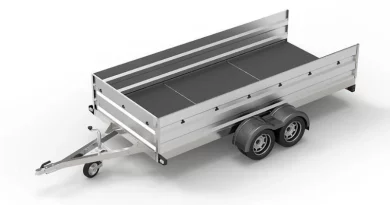E-Bike Safety Essentials: Riding Tips for Beginners
Electric bicycles, or e-bikes, have witnessed a surge in popularity in recent years. They represent a sustainable and convenient mode of transportation, blending the merits of traditional cycling with the added power of electricity. E-bikes are an attractive choice for both eco-conscious individuals and those seeking an alternative means of commuting. However, akin to any mode of transportation, e-bikes come with their own set of safety considerations that riders need to be well-versed in.
Within this comprehensive guide, we will delve into the essential safety measures and riding advice tailored for beginners eager to explore the world of e-bikes. Whether you are contemplating the acquisition of your first electric bike from a reputable source or already possess one, this article aims to furnish you with valuable insights to ensure a safe and enjoyable riding experience. HappyRunSports offers an extensive range of e bikes for sale for adults to cater to different preferences.
Choosing the Right E-Bike
Before diving into the safety tips, it’s crucial to start with the basics: choosing the right e-bike. Your selection should be influenced by various factors, including your riding style, terrain, and budget. HappyRunSports offers an extensive range of electric bikes for adults to cater to different preferences.
- Types of E-Bikes: Understanding the different types of e-bikes, such as city bikes, mountain bikes, and folding bikes, can help you make an informed choice.
- Battery Capacity: Consider the range and battery capacity of the e-bike. Opt for one that suits your daily commuting needs.
- Electric Bike Models: Explore the various models available at HappyRunSports. You can find a variety of options to suit your preferences.
Safety Gear
Safety gear is an absolute must when it comes to e-bike riding. While e-bikes provide assistance, accidents can still happen. Here’s a list of essential safety gear you should consider:
- Helmet: A properly fitted helmet is non-negotiable. It protects your head in case of a fall or collision.
- Gloves: Gloves offer added grip and protect your hands during falls.
- Protective Clothing: Depending on your riding style and local weather, consider investing in protective clothing, like jackets with armor and padded shorts.
- Eye Protection: Sunglasses or clear glasses can protect your eyes from wind, debris, and insects.
Know the Local Laws
Understanding and adhering to local laws and regulations regarding e-bike usage is crucial. Laws can vary depending on your location, so it’s essential to stay informed. Some common regulations include:
- Speed Limits: Many areas have specific speed limits for e-bikes, which are often lower than those for motor vehicles.
- Helmet Requirements: In some places, wearing a helmet is mandatory for e-bike riders, while in others, it’s strongly recommended.
- Bike Lanes and Paths: Familiarize yourself with where e-bikes are allowed to ride, such as bike lanes or shared paths.
- Pedal-Assist vs. Throttle: Different jurisdictions may have distinct rules for pedal-assist e-bikes versus throttle-controlled e-bikes.
E-Bike Maintenance
Proper maintenance of your e-bike is vital for safety. Regular maintenance not only ensures that your bike functions optimally but also reduces the risk of accidents due to mechanical failures. Key maintenance tasks include:
- Tire Check: Ensure that your tires are properly inflated to maintain control and prevent accidents.
- Brake Inspection: Regularly check and adjust your brakes to ensure they are responsive.
- Battery Care: Follow manufacturer instructions for charging and storing your e-bike’s battery to prolong its lifespan.
- Check Bolts and Fasteners: Ensure that all bolts and fasteners are tightened to prevent loose parts that can lead to accidents.
Learn How to Start and Stop Safely
Getting on and off an e-bike may seem straightforward, but there are specific safety considerations to keep in mind:
- Starting: Begin by applying gradual pressure to the pedals and slowly engage the electric assist. Sudden acceleration can throw you off balance.
- Stopping: To stop, ease off the throttle or gradually apply the brakes. Sudden stops can be jarring and increase the risk of falling.
Practice Proper Riding Posture
Maintaining the correct riding posture not only enhances your comfort but also ensures better control of your e-bike:
- Keep Both Hands on the Handlebars: Always have a firm grip on the handlebars to maintain control.
- Bend Your Elbows: Slightly bending your elbows can help absorb shocks and vibrations from the road.
- Knees In: Keep your knees close to the frame of the e-bike for balance and stability.
- Look Ahead: Always look in the direction you’re traveling. This helps you anticipate obstacles and react in time.
Braking Techniques
Proper braking is an essential skill when riding an e-bike, and it can make a significant difference in your safety:
- Front and Rear Brakes: E-bikes usually have both front and rear brakes. Learn to use them together for balanced braking.
- Progressive Braking: Apply the brakes gradually and progressively to avoid sudden jolts and maintain stability.
- Avoid Overusing the Throttle: Overusing the throttle can make braking more abrupt. Try to ease off the throttle before applying the brakes.
Be Mindful of Traffic
When riding your e-bike in traffic, it’s crucial to be aware of your surroundings and follow these safety tips:
- Stay Visible: Make yourself as visible as possible by wearing bright clothing and using lights, especially during low-light conditions.
- Obey Traffic Signals: Follow traffic signals and signs, just like any other road user.
- Use Hand Signals: When turning or changing lanes, use clear hand signals to communicate your intentions to other road users.
- Stay in Your Lane: Ride in a straight line within your lane to maintain predictability.
Keep an Eye on Speed
One of the benefits of e-bikes is their ability to assist with speed, but it’s essential to ride within safe limits:
- Know Your Bike’s Capabilities: Understand the maximum speed your e-bike can reach and be aware of the power settings.
- Adapt to Traffic: Adjust your speed to match the flow of traffic. Going too fast can be risky in congested areas.
- Consider Pedal Assist: If you’re new to e-biking, start with lower power settings and gradually increase as you gain experience.
Ride Defensively
Defensive riding involves anticipating potential hazards and being prepared to react. Here are some key points to remember:
- Watch for Obstacles: Be vigilant for potholes, debris, and uneven road surfaces that can disrupt your ride.
- Stay Aware of Blind Spots: Assume that other road users might not see you, especially in their blind spots.
- Maintain a Safe Following Distance: Keep a safe distance from the vehicle in front of you, allowing ample time to react to sudden stops.
Charging and Battery Management
The e-bike’s battery is a critical component, and proper management is essential:
- Charging: Follow the manufacturer’s recommendations for charging times and methods. Overcharging or undercharging can affect the battery’s performance.
- Battery Life: Batteries have a limited lifespan. Keep an eye on the battery’s health and consider replacing it when it begins to degrade.
- Carry a Charger: On longer rides, carry a charger and plan stops at locations where you can recharge if needed.
Riding on Hills
A fat tire electric bike is great for tackling hilly terrain, but riding on inclines requires some specific considerations:
- Shift Gears Early: When approaching a hill, shift to a lower gear in advance to maintain a comfortable pedaling cadence.
- Use Pedal Assist: Engage pedal-assist modes to make climbing hills more manageable, and maintain balance while climbing.
- Control Descent: When descending, control your speed with your brakes and maintain a firm grip on the handlebars.
Riding in Inclement Weather
Riding an e-bike in adverse weather conditions requires extra caution:
- Wet Roads: Be particularly cautious on wet or slippery roads. Reduce your speed and increase your following distance.
- Snow and Ice: Avoid riding on snow and ice if possible, as e-bike tires may not provide adequate traction.
- Wind: Be prepared for gusty winds, which can affect your balance. Grip the handlebars firmly and ride conservatively.

Maintain Situational Awareness
Remaining aware of your surroundings is crucial to safety. Make sure to:
- Stay Focused: Avoid distractions like using your phone while riding. Keep your full attention on the road.
- Check Mirrors: E-bikes may come equipped with mirrors. Use them to monitor traffic behind you.
- Use Your Ears: Listen for approaching vehicles and pedestrians, as they may not always be visible.
Be Mindful of Pedestrians
Sharing the road with pedestrians is an essential aspect of e-bike safety:
- Use Your Bell: If your e-bike is equipped with a bell, use it to alert pedestrians to your presence when passing.
- Maintain a Safe Distance: Give pedestrians a wide berth when passing, and slow down if necessary.
- Observe Crosswalks: Yield to pedestrians at crosswalks and pedestrian zones.
Practice Defensive Parking
When parking your e-bike, follow these guidelines:
- Lock It Up: Invest in a sturdy lock to secure your e-bike, and use designated bike racks when available.
- Remove Valuables: Take your battery and any valuable accessories with you to prevent theft.
- Be Mindful of Traffic: When parking on the street, ensure you’re not obstructing traffic or pedestrian pathways.
Join E-Bike Riding Communities
One of the best ways to learn about e-bike safety and gather tips is by joining e-bike riding communities and clubs. These groups often organize rides, share experiences, and promote safe riding practices.
Continuous Learning
E-bike safety is an ongoing process. As you gain experience, continue learning and improving your riding skills. Consider taking safety courses or workshops to enhance your knowledge and confidence.
Conclusion
E-bikes are an exciting and environmentally friendly mode of transportation that can transform the way we commute and explore our surroundings. However, ensuring your safety and the safety of others should always be a top priority. By following the e-bike safety essentials and riding tips for beginners outlined in this guide, you can confidently embark on your e-bike journey.
Remember to choose the right e-bike, wear appropriate safety gear, understand local laws, and practice good riding habits. With proper preparation and ongoing awareness, you can enjoy the numerous benefits of e-bike riding while staying safe on the road.
Happy e-biking and stay safe!




